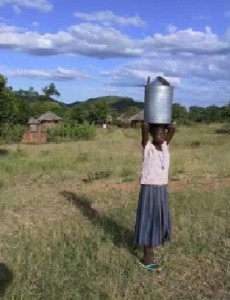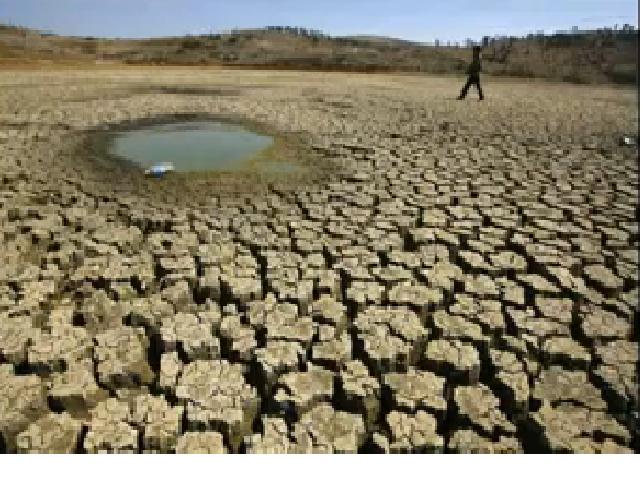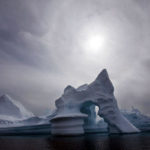2011: World’s 10th Warmest Year, Warmest Year with La Niña Event, Lowest Arctic Sea Ice Volume
From the World Meteorological Organization: Global temperatures in 2011 are currently the tenth highest on record and are higher than any previous year with a La Niña event, which has a relative cooling influence. The 13 warmest years have all occurred in the 15 years since 1997. The extent of Arctic sea ice in 2011 was the second lowest on record, and its volume was the lowest.
Durban, South Africa Climate Talks: Hydroelectric Dams a Disaster in a Warming World
The COP17 climate meeting in Durban, South Africa, is themed “Saving Tomorrow Today.” One topic discussed is construction of dozens of mega-dams for Africa’s major rivers. Zachary Hurwitz at International Rivers, working with Friends of the Earth International and Nigerian activist Nnimmo Bassey (winner of the prestigious Right Livelihood Award) created a Google Earth tour aimed at increasing awareness around the environmental impact of such widespread damming in Africa and beyond placing tomorrow’s ecosystem sustainability at risk.
httpvh://www.youtube.com/watch?v=A8JtoednlbY&feature=player_embedded#!
The “Wrong Climate for Damming Rivers,” with Right Livelihood Award Winner Nnimmo Bassey, explores the impacts of climate change and hydropower on the world’s rivers. Take Action Now by visiting http://www.internationalrivers.org/en/node/6996.
Why Africa Should Shun Hydroelectric Dams


Africa is the least electrified place in the world. An estimated 550 million Africans have no access to electricity. Nearly half of African countries have a power crisis. Solving this huge problem is made more difficult by widespread poverty, and because most Africans live far from the grid, greatly adding to the cost of bringing electricity to them.
Under these challenging conditions, there are no second chances for electrifying Africa: it must be done right the first time. Yet many of the continent’s energy planners are pinning their hopes for African electrification on something as ephemeral as the rain, by pushing for a grid of large hydro dams across the continent. The World Bank has joined the fray, with its latest World Development Report calling for a major hydropower rollout for the continent. And dam-building nations like China and Brazil have descended, on the hunt for lucrative contracts.
The failure of this vision lies in the unpredictable nature of Africa’s rivers, a situation that will be made worse by a changing climate. New dams are being built with no examination of how climate change will impact them. Many existing dams are already suffering from drought-caused power shortages. Climate change is expected to dramatically alter the hydrology of African rivers, creating both worse droughts and more dangerous floods (the latter causing safety concerns for poorly maintained or operated dams). At the same time, many African nations face huge water-security problems. In this climate, the proposed frenzy of African dam building could be literally disastrous.
The oft-repeated sound-bite that only 5-8% of the continent’s hydro potential has been tapped is an incomplete message at best. The other side of the coin is that Africa is already dangerously hydro-dependent. Meanwhile, Africa has not developed even a tiny fraction of a percent of its available solar, wind, geothermal, or biomass power. While large dams have done little to bridge the “electricity divide” that has left so many Africans in the dark, renewable energy projects can be scaled to meet the needs of the average village (or, for that matter, urban area). At a time when global warming threatens to make the continent’s rivers even less reliable for large hydro projects, and their waters more precious for other uses, donors and governments should be looking to diversify the energy mix.
Alternative Energy Sources for Africa and the World
African nations have many better alternatives to large-scale hydro. A few examples:
Geothermal: As the UN notes, Africa has an abundance of geothermal potential. Says Achim Steiner, UN Under-Secretary General and UNEP Executive Director: “There are least 4,000MW of electricity ready for harvesting along the Rift. It is time to take this technology off the back burner in order to power livelihoods, fuel development and reduce dependence on polluting and unpredictable fossil fuels. From the place where human-kind took its first faltering steps is emerging one of the answers to its continued survival on this planet.” UN figures show that Africa has tapped less than 0.6 percent of its geothermal. Kenya is the exception, with 10% of its electricity now coming from geothermal.
Solar: Africa’s potential is nearly limitless. A new study co-sponsored by Justiça Ambiental and International Rivers shows that Mozambique’s huge and virtually unexploited solar potential is about 1.49 million GWh – thousands of times more than the country’s current annual energy demand. And this power is distributed evenly across the country. Exploiting this energy would benefit the more than 80% of Mozambique’s population that is now off-grid.
Wind: Wind potential is also high in many parts of Africa, and is finally beginning to be developed (new large projects are underway in Kenya and Egypt, for example). Co-gen: The production of electricity from steam, heat, or other energy sources as a by-product of another industrial process is well-suited to many African nations. AFRPREN estimates that Africa could get 20% of its electricity from co-gen. Mauritius now gets almost half of its electricity from co-gen plants using mostly sugar cane waste.
Efficiency: Energy efficiency is critical for all nations but – perhaps surprisingly – even more so for poor nations where energy use is just starting to grow. Setting efficiency standards early can help make every dollar invested in energy supply go that much farther, by reducing the cost of systems needed to power villages and towns, and freeing up existing power supply for other uses. The McKinsey Institute estimates that developing countries could save an estimated $600 billion a year by 2020 by investing $90 billion a year in energy efficient cars, appliances and production methods.
Source: http://www.internationalrivers.org/africa/wrong-climate-big-dams
See Also: “Honduras: Patuca River Dams Threaten indigenous Survival,” WilderUtopia.com













